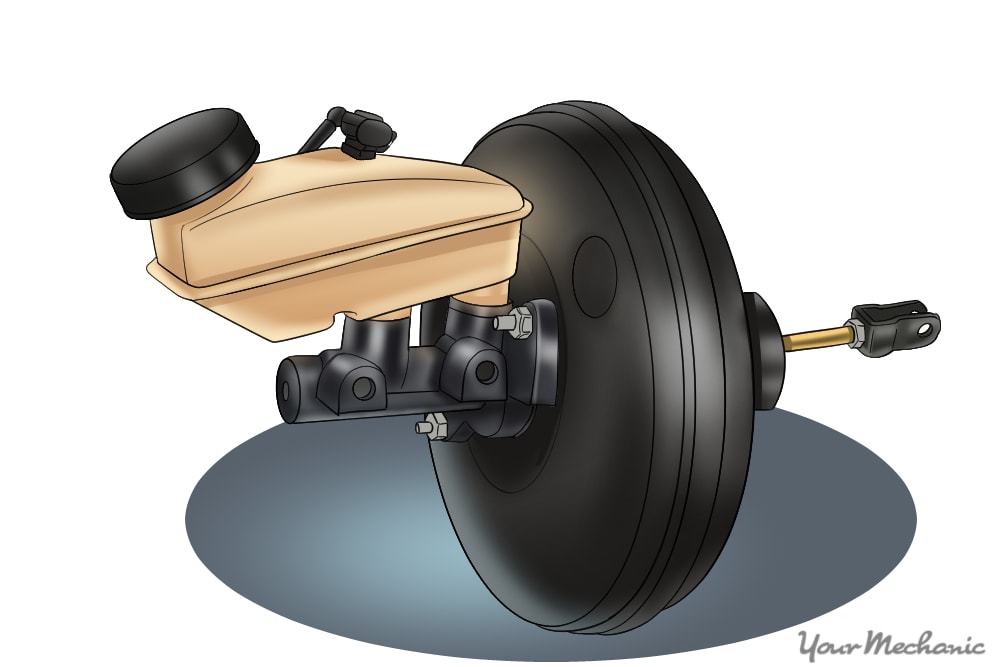

If you own a vehicle made after 1968, it’s likely that you have a power brake system. While there are several evolutions of this vital vehicle operating system, the basic premise of applying leverage, forcing hydraulic pressure, and friction still remains the fundamental process for slowing and stopping a vehicle. One of the most commonly misunderstood issues is understanding the difference between a power brake booster and a vacuum brake booster.
What is a Brake Booster?
A brake booster is a crucial component in a vehicle's braking system that helps amplify the force a driver applies to the brake pedal. It's particularly important in power braking systems found in most modern vehicles. The booster uses vacuum pressure from the engine or an external vacuum pump to assist the driver in applying the brakes.
When a driver presses the brake pedal, the brake booster multiplies the force exerted, making it easier for the driver to slow down or stop the vehicle. This system enhances safety by reducing the physical effort needed to apply the brakes and helps ensure effective braking performance.
Hydro-Boost System vs Power Brake Booster vs Vacuum Brake Booster
In all truth — a power brake booster and vacuum brake booster are the same part. Each utilizes vacuum pressure to assist in the application of hydraulic fluid and utilizing friction between the brake rotor and pads.
Where confusion exists is calling a Hydro-Boost Power Brake Assist System a power brake booster. A Hydro-Boost system bypasses the need for vacuum and uses direct hydraulic pressure to accomplish the same task.
In order to simplify things, let’s break down how a vacuum-based brake booster works as opposed to a hydraulic-based brake booster, along with a few tests for diagnosing potential problems with both.
What is a Vacuum Booster?
A vacuum booster, also known as a vacuum brake booster, is a component in a vehicle's braking system that amplifies the force applied by the driver on the brake pedal. It operates using the vacuum created by the engine. When the driver presses the brake pedal, a vacuum is created in the booster, which assists in applying the brakes.
The vacuum booster is an integral part of power braking systems in many vehicles, aiding in smoother and more efficient braking by reducing the amount of physical effort needed by the driver to engage the brakes.
How Does the Vacuum Brake Booster Work?
A vacuum-based brake booster receives its power via a vacuum system attached to the engine’s intake manifold. Vacuum is circulated through the brake booster, which applies pressure to the hydraulic brake lines when the brake pedal is pressed. This system is used in a vacuum booster or power brake booster. The vacuum supplied by the engine operates an internal bladder, which supplies the force to the hydraulic brake lines.
There are generally three sources of a vacuum brake booster failure:
- No vacuum pressure from the engine.
- Inability of the brake booster to absorb or create a vacuum internally.
- Broken internal parts, such as the check valve and vacuum hose, inside the brake booster that fail to supply power to the hydraulic lines.
What is a Hydro-Boost Power Assist Service and how does it work?
A Hydro-Boost power assist service refers to maintenance or repairs performed on the Hydro-Boost system within a vehicle's braking system. The Hydro-Boost is an alternative to vacuum brake boosters, and it uses hydraulic pressure, often sourced from the power steering pump, to assist in applying the brakes.
The hydro-boost power system works nearly identically to the vacuum-based system, but instead of relying on vacuum pressure, it uses direct hydraulic pressure. It is powered by the power steering pump and will typically fail at the same time as power steering. In fact, that’s typically the first indicator of a hydro-boost power brake failure. However, this system utilizes a series of back-ups to keep the power brakes working for a short period of time in the event of a ruptured power steering hose or broken power steering belt.
What is a Power Brake Booster and how does it work?
A power brake booster is a key component in many modern braking systems, designed to assist the driver in applying the brakes with less physical effort. It works by amplifying the force exerted on the brake pedal, making it easier to slow down or stop the vehicle.
Why is a Power Brake Booster Called a Vacuum Brake Booster?
A brake booster is designed to provide power-added assistance to help apply the brakes. It’s mainly due to the job of a brake booster that a vacuum-assisted system is called a power brake booster. It’s also common for a hydraulic-powered brake booster to also be associated with the term power brake booster. The key to knowing which type of brake booster is used on your vehicle is to consult your vehicle owner’s manual.
Most of the time, this question is asked when a problem with your brake system has popped up. A professional mechanic can be quite helpful in diagnosing a problem with your brake system. During a brake system inspection, they’ll complete several diagnostic checks to determine the root source. This includes the power brake booster. If you have a vacuum-based system, or hydraulic, they’ll be able to identify the issue and recommend the best replacement parts and repairs needed to get your car back on the road.
If you are having trouble with any of these systems, check out these related articles:



